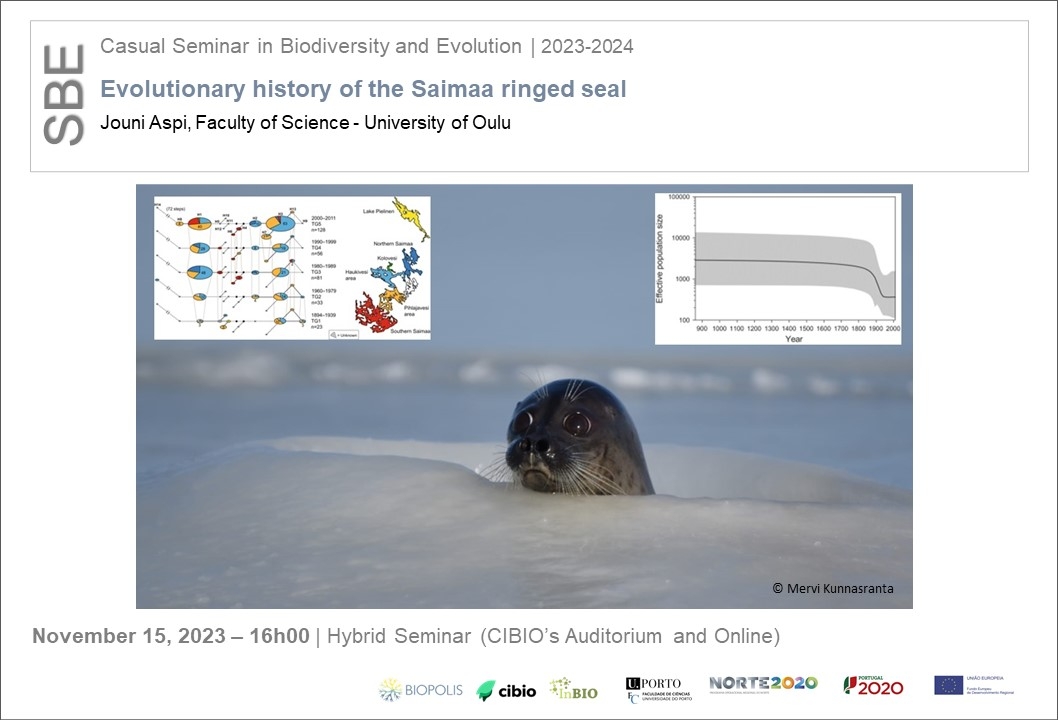Evolutionary history of the Saimaa ringed seal
Event
CASUAL SEMINAR IN BIODIVERSITY AND EVOLUTION
November 15th, 2023
Jouni Aspi, Faculty of Science - University of Oulu | 16h00 | Hybrid Seminar

CASUAL SEMINAR IN BIODIVERSITY AND EVOLUTION
The Saimaa ringed seal (Pusa hispida saimensis) is endemic to Lake Saimaa in Finland. The subspecies is thought to have originated when parts of the ringed seal population of the Baltic region were trapped in lakes emerging due to postglacial bedrock rebound around 9000 years ago. During the 20th century, the population experienced a drastic human-induced bottleneck. Today encompassing a little over 400 seals with extremely low genetic diversity, it is classified as endangered. We sequenced sections of the mitochondrial control region from 60 up to 125-years-old museum specimens of the Saimaa ringed seal. The generated dataset was combined with publicly available sequences. We studied how genetic variation has changed through time in this subspecies and how it is phylogenetically related to other ringed seal populations from the Baltic Sea, Lake Ladoga, North America, Svalbard, and the White Sea. We observed temporal fluctuations in haplotype frequencies and loss of haplotypes accompanied by a recent reduction in female effective population size. In apparent contrast with the traditionally held view of the Baltic origin of the population, the Saimaa ringed seal mtDNA variation also shows affinities to North American ringed seals. Our results suggest that the Saimaa ringed seal has experienced recent genetic drift associated with small population size. The results further suggest that extant Baltic ringed seal is not representative of the ancestral population of the Saimaa ringed seal, which calls for re-evaluation of the deep history of this subspecies.
I am a professor and unit head in the Ecology and Genetics Research Unit, as well as the head of the Biodiversity Unit. My research focuses on the conservation and evolutionary genetics of wildlife. I am interested in evolutionary processes associated with environmental changes and human-animal interactions on various timescales, especially in heavily exploited or domesticated animals with small population sizes or those significantly impacted by anthropogenic or climatic events. I use both present-day and fossil and museum specimen DNA to construct more complete evolutionary histories of the study species. The research often has important management and conservation implications.
For more information, visit the Wildlife Genomics Research Group page: https://wildlifegenomics.wordpress.com/
For more information, visit the Wildlife Genomics Research Group page: https://wildlifegenomics.wordpress.com/
[Host: Raquel Godinho, Ecogenomics - ECOGEN]
